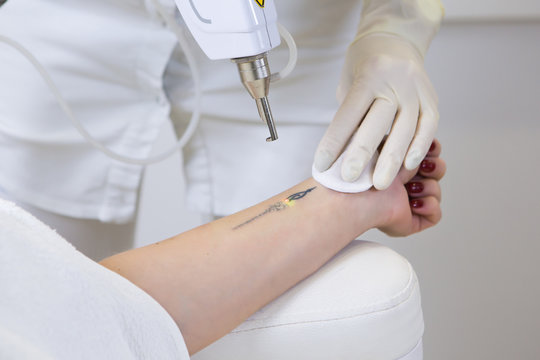Navigating the process of tattoo removal in Riyadh can feel overwhelming, but understanding the technology and what to expect from a Q-switched laser is a great starting point. Q-switched lasers are a well-established and widely available method for tattoo removal, offering a reliable path to fading or completely eliminating unwanted ink. This guide will walk you through the process, from the initial consultation to the aftercare, so you know exactly what to anticipate. Many clinics now offer advanced laser tattoo removal in Riyadh, providing safe and effective solutions for unwanted ink.
The Science Behind Q-Switched Lasers
A Q-switched laser operates by delivering very short, high-energy pulses of light—in the nanosecond range—to the tattooed area. The intense light energy is absorbed by the tattoo's ink particles, causing them to heat up and shatter into tiny fragments. These fragments are then small enough for the body's natural lymphatic system to flush away over a period of weeks. Different types of Q-switched lasers are used to target specific ink colors. For instance, a Nd:YAG laser is particularly effective on black and dark blue inks, which are the easiest to remove.
The Initial Consultation: The First Step

Before your first session in a Riyadh clinic, you will have a crucial consultation with a dermatologist or a certified laser technician. This is a vital step to ensure your safety and the effectiveness of the treatment. During this meeting, the professional will:
- Assess your tattoo: They will evaluate its size, color, age, location, and the density of the ink. These factors are the primary determinants of how many sessions you will need and the overall cost.
- Review your medical history: You will be asked about any pre-existing medical conditions, medications, or skin sensitivities that could affect the treatment.
- Discuss expectations: The specialist will explain the realistic outcomes, the potential for side effects, and the number of sessions required. This is the perfect time to ask any questions you have about the process.
The Treatment Session: What It Feels Like
The actual laser session is relatively quick. The duration depends on the size of the tattoo, but most sessions last from a few minutes to up to 30 minutes. Here's a step-by-step breakdown of what you can expect:
- Preparation: The tattooed area will be thoroughly cleaned. In some cases, a topical anesthetic cream may be applied to minimize discomfort, though many patients find the sensation tolerable without it.
- Protective measures: You and the technician will wear protective eyewear to shield your eyes from the laser light.
- The laser process: The technician will move a handheld laser device over the tattoo. As the laser pulses hit the skin, you will feel a sensation often compared to a rubber band snapping against your skin. You may also hear a faint popping sound, which is the sound of the ink particles breaking apart.
- Immediate results: The treated area will likely turn a temporary frosty white color, known as "frosting," which is a normal reaction and a sign that the laser is effectively breaking down the ink. The area may also become slightly swollen and red.
Aftercare and Recovery
Proper aftercare is essential for a smooth healing process and to achieve the best results. The technician will provide you with detailed instructions, which typically include:
- Cooling the area: Immediately after the session, a cold compress or an ice pack may be applied to reduce swelling and discomfort.
- Applying an ointment: An antibiotic ointment will be recommended to prevent infection and a bandage may be used to protect the treated area.
- Keeping it clean: You must keep the area clean and dry, following the instructions for washing and changing the bandage.
- Sun protection: Direct sun exposure must be avoided for at least a few weeks after the treatment. When you are outside, it's crucial to apply a high-SPF sunscreen to the treated area to prevent hyperpigmentation.
- Avoiding certain activities: You will be advised to avoid strenuous activities, hot tubs, saunas, and swimming pools until the skin is fully healed.
The Journey to Clear Skin
You will not see the tattoo disappear after one session. The fading is a gradual process that happens over several weeks as your body flushes out the fragmented ink. The sessions are typically spaced six to eight weeks apart to allow the skin to heal and to give your body's immune system time to clear the ink. The number of sessions required for complete removal can vary significantly, ranging from 5 to 10 or more, depending on the factors discussed during your consultation.




Comments